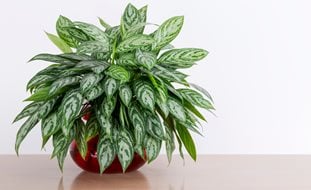How to Grow and Care for Bird of Paradise
Grow this exotic flowering tropical in your yard or home Published 12/23/2022Bird of paradise is a tropical perennial known for the exotic crested flowers that resemble a bird in flight. Related to banana plant, bird of paradise is most commonly grown outdoors in frost-free regions, but can also be grown as an indoor houseplant and brought outside during warmer months. Bird of paradise is unlikely to bloom if it’s kept indoors year-round, but the bold foliage is attractive on its own.
Native to South Africa, where it’s commonly known as crane flower, this tough carefree plant is commonly used in urban landscape plantings in warm climates. The iridescent orange and blue flowers grow on tall robust stems and are long-lasting as cut flowers, making them popular with florists. Here’s how to grow and care for bird of paradise, along with tips on how to use it in your home or landscape.
On this page: Basics | Types | Planting | Care | FAQs | Ideas
On this page:
BIRD OF PARADISE BASICS
Botanical name:
Strelitzia spp.
Zones:
10-12 (Can be grown in Zone 9 in protected area, such as under eaves in a south or east-facing location.)
Exposure:
Full sun to partial sun
Bloom time:
Late winter to summer, with year-round bloom in optimal growing conditions.
Flowers:
The pointed beak-like sheath from which the flowers emerge, called a spathe, grows at a right angle to the stem. The brightly colored flowers consist of orange, yellow, or white sepals and vivid blue petals. Plants produce 1 to 3 blooms on a single stalk, each lasting several weeks. The spathe can acquire hues of red, pink-orange, purple, or blue.
Foliage:
Oval or lance-shaped evergreen foliage grows on long slender stems in dense rhizomatous clumps. The large gray-green leaves will often split, a natural adaptation that prevents plants from snapping in wind or rain. Plants are slow growing and perform well in coastal gardens.
Toxicity:
Bird of paradise is mildly toxic to humans and pets if ingested. Flowers contain tannin, which can cause symptoms of nausea, vomiting, and drowsiness.
TYPES OF BIRD OF PARADISE
There are five species of bird of paradise, with two species most commonly grown by home gardeners:
Orange bird of paradise (Strelizia reginae) is the most common variety, with orange and blue colored flowers. Plants grow 3 to 5 feet tall and wide, with leaves 1 to 2 feet long. ‘Mandela’s Gold’ has yellow sepals. ‘Pygmaea’ (syn. ‘Humilis’) is a dwarf variety, growing 3 feet tall.
White bird of paradise (Strelizia nicolai), also known as giant bird of paradise, produces blue and white flowers. In frost-free climates, plants can reach 20 to 30 feet tall, with leaves 5 to 10 feet long.
PLANTING BIRD OF PARADISE
When to plant:
In frost-free climates, plant outdoors during cooler months to avoid heat stress. For containerized specimens, repot every 1 to 3 years in spring. Plants prefer to be slightly potbound for the best bloom. Transplant into a pot that is 1 to 2 inches wider than the previous container.
Where to plant:
Plant in a site that receives full sun to partial sun. Indoors, place in a room that gets the most bright light and direct sun.
How to plant:
Loosen soil in the planting area and amend with compost or other rich organic matter. Dig a hole slightly wider and the same depth as the root ball. Remove plant from the nursery container and loosen roots if potbound. Place in the hole so the top of the root ball is level with the surrounding soil. Fill in the hole with soil, tamp down gently to remove air pockets, and water thoroughly. Water regularly until established.
BIRD OF PARADISE CARE
Soil:
Bird of paradise plants are adaptable to a range of soils. For the healthiest growth, amend native soil with compost or other rich organic matter and make sure soil is well-draining. Plants prefer a pH of 5.5 to 7.5. For potted plants, use a high quality all-purpose potting mix that drains well.
Temperature:
Optimal temperature for bird of paradise ranges from 60 to 80 degrees F. Wait to place houseplants outdoors until temperatures are consistently at 60 degrees F or above and acclimate gradually to prevent stress or leaf scald.
Humidity:
Bird of paradise prefers high humidity. If growing indoors, use a room humidifier, mist leaves or place plants on a pebble tray filled with water. Don’t allow the bottom of the pot to sit in water.
Amendments & fertilizer:
Mulch around the base of outdoor plants once a year with a thin layer of compost and fertilize occasionally with compost tea or other liquid fertilizer. Potted plants leach out nutrients more quickly, so will need more regular fertilizing. Feed once a month during spring and summer with a balanced 20-20-20 water soluble fertilizer. Cease fertilizing in fall and winter when plant growth slows.
Watering:
Keep plants evenly moist. Don’t allow soil to become soggy or dry out completely. Bird of paradise is drought tolerant once established.
Pruning and deadheading:
Remove spent bird of paradise flowers and cut out dead or diseased foliage as it occurs. To thin overgrown landscape plants, remove up to a third of the older foliage back to the ground in spring. To rejuvenate older specimens, cut back the entire plant to the ground in spring and allow 1 to 2 years for plants to recover.
Overwintering:
Bird of paradise is reliably hardy in zones 10-12. In zone 9, plants can be overwintered in the ground with protection from a row cover when there is danger of frost.
Pests and diseases:
When grown in the right conditions, bird of paradise is generally problem-free. Diseases include botrytis or root rot. Pests can include aphids, mealybugs, scale, spider mites and whitefly.
Is bird of paradise deer resistant?
Bird of paradise is regarded as deer resistant, though grazing may occur if other food sources are scarce.
FAQ’S
Are birds of paradise easy to care for?
When given the right growing conditions, bird of paradise is easy to grow. Provide regular water and fertilizer for the healthiest plants.
Does bird of paradise need full sun?
The most common reason why bird of paradise won’t bloom is insufficient light. Provide at least 6 hours of direct sun during the growing season. In hotter climates, provide some afternoon shade to prevent leaf or flower scorch.
Does bird of paradise grow indoors or outdoors?
This tropical can be grown outdoors year-round in frost-free climates. In colder zones, plants can be overwintered indoors and set outside during warmer months.
How long do birds of paradise last?
When grown in optimal conditions, bird of paradise is a long-lived perennial. Allow 3 to 5 years for mature plants to bloom.
BIRD OF PARADISE DISPLAY IDEAS
There are many ways to use bird of paradise in your home or landscape. Here’s how:
- For an exotic summer landscape, combine bird of paradise in a garden bed with other tropical-looking plants such as mandevilla, ferns, canna lily, hardy banana, and croton.
- Use bird of paradise as a floor specimen in a sunroom or other bright area of your home to stave off the winter blues.
- Plant in a large colorful ceramic pot and place on a sunny deck or patio for a bold focal point.
- In frost-free climates, plant a hedge of bird of paradise along a swimming pool, fence or wall for year-round color.
- Place containers on either side of your porch and plant with bird of paradise for a welcoming entrance.
- Arrange cut bird of paradise flowers in a vase with other long-lasting tropical flowers such as heliconia, protea, and anthurium for a unique floral display.
- Place bird of paradise indoors alongside other houseplants with similar growing needs for an eclectic display.








